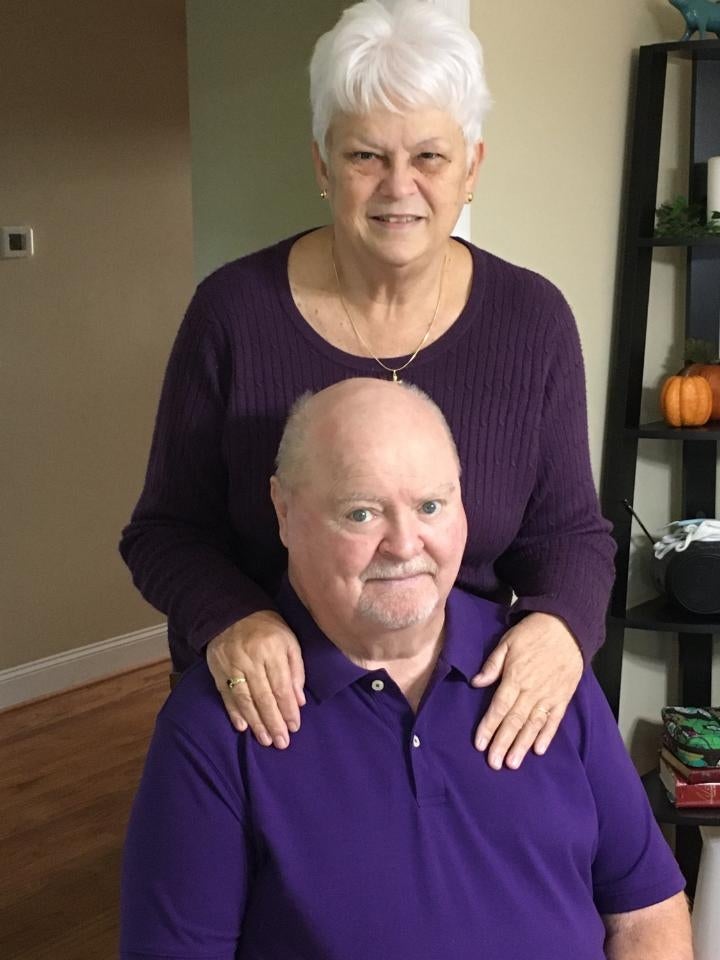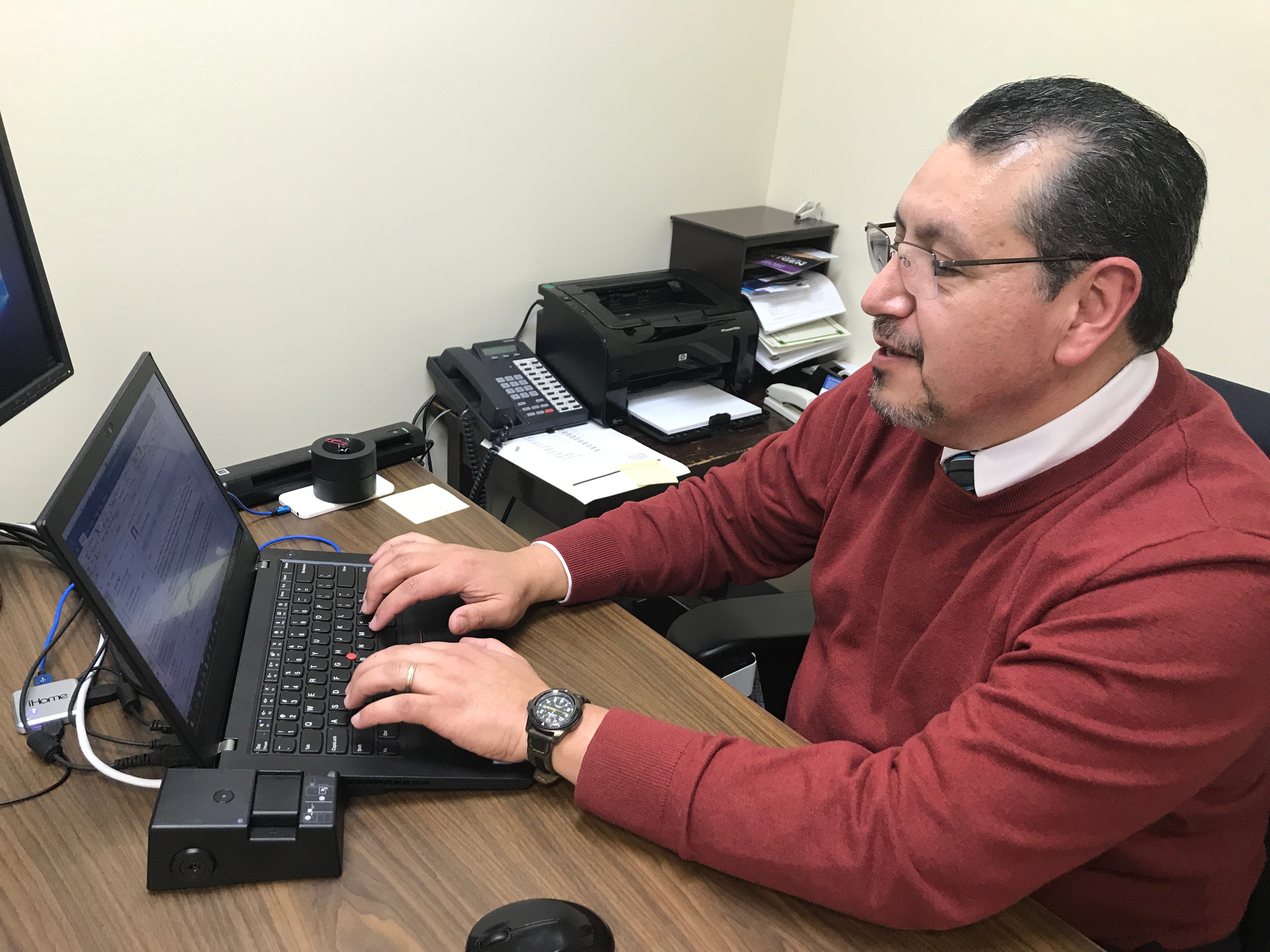Stanly County looks back one year after COVID-19 began
Published 9:33 am Friday, March 19, 2021
|
Getting your Trinity Audio player ready...
|
Terry and Patricia Harris were like a lot of people last year when it came to their initial thoughts about the coronavirus.
Since the Millingport residents didn’t know anyone who had been infected, they played down the virus’ severity.
“We were skeptical about it at first,” Terry said, “and we thought, ‘Well, is it really as bad as they say it is?’ ”
It took only a few months for his question to be answered in a very personal way.
In late October, they started to feel sick. They were coughing, had body aches and felt constant fatigue. They eventually went to an urgent care center in Monroe where rapid-testing revealed they both had the virus.
While Patricia, 67, suffered severe headaches, Terry, 66, struggled to breathe to the point where a few days after getting tested, he was taken to Atrium Health Cabarrus in Concord. As a diabetic and heart attack survivor, he had underlying health conditions which put him at increased risk for severe illness.
Once at the hospital, Terry’s heart-rate spiked to 140 beats a minute. He had COVID-19 pneumonia, which had spread to his heart, resulting in severe atrial fibrillation. He said trying to read his heart monitor was like a “blurred TV screen” because his heart was beating so fast.
Though she was able to FaceTime her husband, the hardest part for Patricia, who was fighting the virus at home, was that she couldn’t be by Terry’s side to comfort and encourage him.
“While he was gone, I just had peace that he was being taken care of,” Patricia said.
The doctor eventually put Terry on the drug Remdesivir, and he began to show signs of improvement. Unlike other COVID patients admitted to the hospital, his oxygen levels, while not great, were stable enough that he never needed to be placed on a ventilator. He was released from the hospital a week later.
Once home, EMTs were sent to Terry’s house for the first several days to check his oxygen levels and make sure he was okay. He also had daily virtual check-ups with doctors.
His family doctor, who had been monitoring the situation, later told Terry that his bout with the virus was worse than anything he’d ever dealt with.
“He said you don’t know how close to death you were,” Terry recalled.
Several months later, the couple, who have since been vaccinated, are still not fully healthy. They get fatigued easily and have been working out at the YMCA to regain their stamina.

Terry and Patricia Harris each contracted the coronavirus last fall. While Patricia was able to remain at home, Terry’s condition worsened to the point where he was taken to Atrium Health Cabarrus in Concord.
As Stanly hits the one-year mark of the virus making its way into the county (the first documented cases occurred March 20), Terry and Patricia are just two of the more than 7,000 Stanly County residents who have contracted the coronavirus. That translates to about 11 percent of the total population.
From young, healthy medical workers, to teachers and school staff to even the former chairman of the Board of Commissioners, people of all ages and backgrounds have battled the virus.
While the overwhelming majority have survived, the county has still lost almost 130 people — many of them older citizens in long-term care facilities. The first death, a person in their 60s with underlying health conditions, occurred April 9.
Each one of them had a unique story with loved ones they left behind. One death that reverberated throughout the county was that of Norwood Elementary School teacher Julie Davis, who died in early October after contracting COVID-19. She was only 49.
“She loved big,” Norwood Elementary curriculum coach Bev Russell told The Stanly News & Press at the time. “She always wanted to help, she was a true server.”
Even for people who have not been personally impacted by the virus, the pandemic has still touched everyone in some way. Students and teachers across the county have struggled with remote learning and the social isolation that comes with spending so much time at home, while thousands of residents have been furloughed or lost their job.
Stanly’s unemployment rate skyrocketed to 9.9 percent last year for April, up from 4.3 percent in March, with almost 3,000 unemployed. The rate increased to 10.2 percent in May.
Gus Vanegas, head of the NCWorks Career Center in Albemarle, said that compared to the recession in 2008, the loss of jobs during the early part of the pandemic was much more swift and sudden, with people flooding the career center in late March and April about claims for unemployment.
Over the past several months, the economic output has improved considerably. The unemployment rate for December — the most recent data available — was 5 percent, the lowest monthly rate since last March.
People filing initial COVID-19-related unemployment claims have also decreased substantially over the course of the pandemic — 250 people filed such claims in January, much lower than the roughly 1,800 people who filed last April.
In the coming months, Vanegas, who has been in talks recently with county businesses seeking new employees, is confident the local economy will continue to improve.
“I’m thinking the economy will come back very quickly,” he said.

Gus Vanegas, head of the NCWorks Career Center in Stanly County.
Decrease in cases and hospitalizations over the past few weeks
What made the virus so dangerous at the onset of the pandemic was that, as a novel coronavirus that originated in China, little was known about it in the United States.
“We were building the plane as we were flying it,” Stanly County Health Director David Jenkins said about his department trying to learn about this new disease. “We never had a playbook with this and we had to figure it out as we went.”
Fortunately, as the months have progressed, the medical community has continued to gain insight into combatting the virus, which has resulted in less people dying and getting seriously sick.
“We have acquired knowledge at an astonishing rate,” said Jenny Hinson, a hospitalist at Atrium Health Stanly. “Our management of COVID patients, it gets better and better” as time goes on.

Jenny Hinson
While many of the sicker patients in Stanly were often transferred to hospitals in Concord or Charlotte for treatment, Hinson said there came an inflection point — she estimates around December and January — where the entire regional healthcare system simply became overwhelmed.
At that point, “there was nowhere to send anyone because the whole system was overly full,” she said.
Throughout most of January, at least 30 people were hospitalized with the coronavirus on any given day, according to data from the Stanly County Health Department. On Jan. 8, 39 people were hospitalized with the virus, the highest documented one-day total during the pandemic.
Fortunately, Hinson says she has noticed a “tremendous decrease” in hospital patients over the past few weeks compared to the beginning of the year. Much of it has to do with getting past the post-holiday winter surge, though she hypothesizes it’s also due to other factors including more people getting vaccinated, gathering outdoors and wearing masks in public.
So far this month, daily hospitalizations in Stanly have remained in the single digits. On March 17, for example, only six people were hospitalized, per Health Department data. New daily cases also appear to be declining.
Vaccinations provide much-needed hope
One of the big reasons why COVID-19 numbers have decreased across the state and much of the country is because so many people are getting vaccinated. As of Wednesday, more than 3.4 million vaccine doses have been administered in North Carolina. This has led to almost 26 percent of adults 18 and older having been partially vaccinated and 17 percent having been fully vaccinated.
In Stanly, the health department had been the sole vaccine provider, though Walgreens and CVS locations are now starting to vaccinate people. From testing to vaccinating to answering the many questions people have about the virus and the governor’s many executive orders, it’s been an all-hands-on-deck situation for the department during the pandemic. Almost all of the available staff are currently working in some capacity to help vaccinate the public.
“Moving from testing to now vaccinations, the whole process has just been a big learning experience for us,” Jenkins said, “but at the end of the day, we’re still just as busy as we were when we began.”
More than 10,000 residents (16 percent of the population) have now been partially vaccinated in Stanly County while more than 5,500 (9 percent of the population) are fully vaccinated, according to state data. The health department, which has vaccinated around 400 people each day, has administered roughly 8,000 first doses and 3,700 second doses. It has been receiving about 800 first doses and 800 second doses each week.
For Wendy Growcock, public education specialist with the health department, the best part about administering vaccines to the public is providing them with some much needed hope that, even though the pandemic is still ongoing, there is a light at the end of the tunnel.
Many people who get vaccinated have tears in their eyes “because they know that this is going to change the way that they’re able to interact with their loved ones,” she said.
Getting vaccinated has also provided a major lift for Growcock. As a caregiver for her older parents (who are also vaccinated), she can now safely visit and interact with them.
“It made me feel better about going into their home and doing the normal things that have to be done every day.”
As someone who has regularly interacted with coronavirus patients and thus dealt with the ever-present fear of possibly being infected at any time, Hinson signed up to get vaccinated the moment she was allowed to do so.
After receiving her vaccine in December, she went into the bathroom, hid so no one could see her and cried for quite some time.
“To no longer be afraid that I would abandon my children or pass the disease on to the people I love who are vulnerable…you can’t describe that relief,” Hinson said.
Despite the presence of coronavirus strains in the state and the fact that Stanly’s numbers have declined in the past before spiking, this moment in time — when so many people are getting vaccinated each week — appears different. Hinson says she now feels something that has eluded her over the past year: a sense of cautious optimism about the future.






